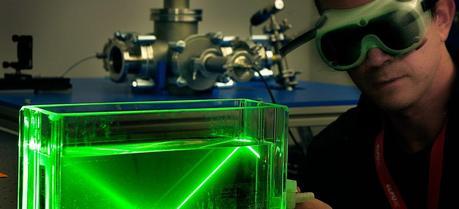 Demonstration of the first results of the SIGMA research project. (Credit: Iberdrola)
Demonstration of the first results of the SIGMA research project. (Credit: Iberdrola)Iberdrola, a Spanish private multinational electric utility company, the Center for Ultrashort Ultraintense Pulsed Lasers (CLPU) and the University of Salamanca (USAL) performed a demonstration of the first results of the SIGMA research project, an R&D initiative aimed at designing a device to reduce emissions from fossil fuel power plants and industrial facilities by almost 100%.
The project focuses on developing advanced systems for separating atmospheric gases by ionization and magnetism for implementation in carbon capture (CO2).
The idea is to use ultra-short, ultra-intense laser radiation to effectively ionize the pollutant gases generated at these facilities, in order that they may be extracted via electrical and magnetic fields, processed and used as raw materials in other industries, such as fertilizer companies or canned food.
The event to launch the first prototype, held yesterday at the CLPU facility in Salamanca, included a full demonstration of how it works. This first device will be crucial for the outcome of the initiative, as it will be the platform for the tests on which the conclusions for the definitive system design will be based.
The SIGMA project was first launched in 2011, with a budget of over €2.5 million and an expected four-year duration.
The Center for Ultrashort Ultraintense Pulsed Lasers (Centro de Láseres Pulsados Ultracortos Ultraintensos, CLPU) is the national facility specialized in femtosecond laser pulses with peak powers at gigawatt, terawatt and petawatt levels. The main equipment is the VEGA Laser, the Spanish petawatt laser (30J/50fs) and its auxiliary synchronized arms. The object of the facility is to serve both the scientific community and the industry by providing access to state-of-the art high power lasers, as well as advice, through collaborative research.
